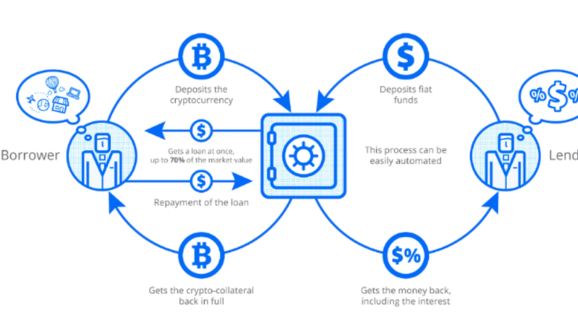Introduction:
Did you know that over 50 million Americans currently possess Bitcoin? Surprisingly, just one in ten actively earns cryptocurrency through ways other than basic buying and holding! I’ve spent years researching alternative ways to earn Bitcoin, and let me tell you—there are some fantastic chances out there that most people are unaware of. Whether you’re new to crypto or want to boost your existing portfolio, I’ll show you how to start earning Bitcoin now. We’ll teach you everything you need about passive income sources and active earning ways!
Let’s start a discussion about Bitcoin free-earning methods:
1: Getting Started with Bitcoin Earnings

Getting started with Bitcoin profits necessitates a thorough understanding of fundamental principles, tools, and tactics. First, create a secure Bitcoin wallet to safeguard the safety of your digital assets—options include hardware wallets for ultimate security and software wallets for convenience.
Essential platforms and tools differ depending on your chosen earning technique, such as exchanges, mining software, and freelance marketplaces that accept Bitcoin. Each method—such as trading, staking, mining, or freelancing—has varying risk levels and potential returns, so it’s critical to consider what corresponds with your financial goals and risk tolerance.
Understanding core Bitcoin terminology like private keys, public addresses, and blockchain allows you to traverse the ecosystem more successfully. While some income strategies, such as mining or trading, may necessitate an initial investment, others, such as earning Bitcoin through affiliate programs or freelance labor, may have minimal to no upfront fees. With the proper knowledge and safeguards, you can discover various ways to earn Bitcoin securely and efficiently.
2: Mining Bitcoin: A Technical Approach
Bitcoin mining is validating transactions and securing the Bitcoin network by solving complex cryptographic puzzles using specialized hardware. Miners compete to add new blocks to the blockchain, earning rewards in Bitcoin for their efforts.
There are various types of mining equipment, from ASIC (application-specific integrated circuit) miners, which offer high efficiency but come at a higher cost, to GPUs, which are more versatile but less powerful for Bitcoin mining.
Miners can choose between hardware mining, where they own and maintain physical rigs, or cloud mining, which allows them to rent mining power remotely—each option has different cost structures, risks, and potential returns. Since mining is energy-intensive, power consumption is a major factor in profitability, requiring careful calculation of electricity costs versus potential earnings.
Many miners join mining pools, which combine computing power to increase the chances of earning rewards consistently. Understanding these technical aspects can help miners optimize their setup and maximize profitability in the competitive Bitcoin mining landscape.
3: Staking and Lending Opportunities

Staking and lending allow Bitcoin holders to earn passive income without actively trading. While Bitcoin itself cannot be traditionally staked like proof-of-stake (PoS) cryptocurrencies, platforms offer alternatives such as lending Bitcoin to borrowers in exchange for interest. Various Bitcoin lending platforms, such as centralized exchanges and decentralized finance (DeFi) protocols, offer different interest rates depending on demand, lock-up periods, and risk levels.
Lending platforms vary in security, with some offering collateralized loans to reduce default risks, while others may expose lenders to market fluctuations and borrower defaults. Interest rates can range from a few percentage points to double digits, depending on platform policies and market conditions. To ensure security, users should research the platform’s credibility, enable two-factor authentication (2FA), and consider using platforms with insurance protection or strong regulatory compliance. Understanding these factors helps Bitcoin holders maximize their earnings while minimizing potential risks in the staking and lending space.
4. Play-to-Earn and Gaming Methods

Play-to-earn (P2E) gaming is a fun and interactive way to earn Bitcoin while enjoying your favorite games. There are plenty of platforms out there, from Bitcoin casinos and faucet games to more immersive blockchain-based RPGs and strategy games.
Some games reward players for completing challenges, while others offer Bitcoin through competitions, daily tasks, or referral programs. To make the most of your gaming earnings, it’s smart to focus on skill-based games, take advantage of bonuses, and choose platforms with a solid reputation.
However, it’s important to weigh your time investment against potential returns—some games provide small but steady payouts, while others require serious effort before you see any real earnings. If you enjoy gaming and want to earn a little extra Bitcoin on the side, play-to-earn can be a rewarding way to do it. For more details, please visit this website: blogslead.
5: Freelancing and Work-for-Bitcoin Opportunities

Freelancing for Bitcoin is a great way to earn crypto while using your skills, whether you’re a writer, developer, designer, or marketer. Several platforms, like Bitwage, Cryptojobs, and Freelancer.com, connect freelancers with clients willing to pay in Bitcoin. In the crypto space, skills like blockchain development, content writing, cybersecurity, and digital marketing are especially in high demand.
To get started, you’ll need a secure Bitcoin wallet and a way to invoice clients in crypto. Finding legitimate Bitcoin-paying clients takes some research—checking reviews, using escrow services, and starting with small projects can help build trust. If you’re already freelancing in traditional currencies, switching to Bitcoin can be as simple as offering it as a payment option to clients. With the right approach, freelancing for Bitcoin can be both profitable and a step into the growing digital economy.
6: Bitcoin Rewards and Cashback Programs

Earning Bitcoin through rewards and cashback programs is one of the easiest ways to stack up crypto without extra effort. Several credit cards, like the BlockFi Rewards Visa and Gemini Credit Card, offer Bitcoin instead of traditional cashback, letting you passively grow your holdings with everyday purchases. Many shopping platforms, such as Lolli and Fold, also give Bitcoin cashback when you shop at partnered stores.
Browser extensions like Honey and Bitrefill make earning crypto even simpler by automatically applying discounts and offering Bitcoin rewards on qualifying purchases. To maximize your earnings, it’s smart to use multiple rewards programs, stack bonuses, and take advantage of promotions. Since reward rates vary across platforms, comparing options helps you find the best return for your spending habits. If you’re already shopping or using credit cards, why not earn some Bitcoin along the way?
7: Trading and Arbitrage Strategies

Trading Bitcoin can be an exciting way to grow your crypto holdings, but it takes strategy and patience to do it right. Beginners often start with basic strategies like spot trading, dollar-cost averaging (DCA), or swing trading to take advantage of price movements. Understanding market trends, timing, and indicators like RSI or moving averages can help you make smarter decisions.
Arbitrage—buying Bitcoin on one exchange where it’s cheaper and selling it on another where it’s priced higher—is another way to earn, but it requires quick action and low fees to be profitable. Managing risk is crucial, so setting stop-loss orders, only investing what you can afford to lose, and diversifying strategies can help protect against market swings. There are also great tools, like TradingView and CoinMarketCap, that help track prices and identify opportunities. With the right approach, Bitcoin trading can be both rewarding and educational.
8: Content Creation and Social Media Earnings

If you love creating content and have a passion for crypto, there are plenty of ways to earn Bitcoin through blogging and social media. Platforms like Publish0x, Steemit, and Medium’s Partner Program let writers share insights on crypto and get rewarded in Bitcoin or other digital assets. On social media, tipping features on Twitter (X) and platforms like BitClout allow followers to send Bitcoin as appreciation for valuable content.
To succeed, focus on creating engaging, informative posts that break down complex crypto topics in a way that’s easy to understand. Building an audience takes time, but staying consistent, sharing market updates, and engaging with the community can help grow your reach. Whether you’re writing articles, making YouTube videos, or posting crypto memes, there are real opportunities to turn your content into Bitcoin earnings.
9: Bitcoin Faucets and Microtasks

Bitcoin faucets and microtasks offer an easy, low-risk way to earn small amounts of Bitcoin over time. Faucets are websites that give out tiny Bitcoin rewards for completing simple tasks like captcha verification or ad clicks, while microtask platforms like Cointiply and FreeBitcoin pay users for surveys, watching ads, or testing apps. Since these earnings are small, managing your time wisely is key—focusing on the highest-paying tasks and setting daily goals can help maximize rewards.
Some users even automate faucet claims with bots or scripts, but it’s important to do this safely and within platform guidelines to avoid bans. To boost earnings, many people combine multiple micro-earning methods, stacking rewards from different sources. While it won’t make you rich overnight, these methods can be a fun way to accumulate Bitcoin without investment, especially for beginners looking to get started in crypto.
10: Advanced Earning Strategies

For those looking to take their Bitcoin earnings to the next level, advanced strategies like DeFi, the Lightning Network, and node operation offer exciting opportunities. Decentralized finance (DeFi) platforms allow Bitcoin holders to earn by providing liquidity, lending, or staking-wrapped Bitcoin (WBTC) in yield farming pools. The Lightning Network, a second-layer solution for faster transactions, enables users to earn Bitcoin by running a Lightning node and facilitating payments.
Operating a full Bitcoin node also helps secure the network, and while it may not generate direct income, some services reward node operators for participation. Yield farming with WBTC on DeFi platforms can provide high returns, but it comes with risks like smart contract vulnerabilities and market fluctuations. As the crypto ecosystem evolves, new earning methods continue to emerge, offering creative ways for Bitcoin enthusiasts to grow their holdings beyond traditional strategies.
11: Safety and Tax Considerations
Earning Bitcoin is exciting, but keeping it safe and staying compliant with taxes is just as important. Securing your Bitcoin means using trusted wallets—hardware wallets for long-term storage and software wallets with strong security for daily use. Since tax laws on crypto earnings vary by country, it’s crucial to understand how different earning methods, like trading, staking, or freelancing, are taxed in your region. Keeping clear records of transactions, income, and withdrawals helps with tax reporting and prevents headaches later.
Scams are everywhere in the crypto space, so always verify platforms, avoid too-good-to-be-true offers, and never share private keys. Legal considerations also differ globally, so checking local regulations ensures you stay on the right side of the law. With the right precautions, you can earn Bitcoin safely and responsibly while avoiding unnecessary risks.
Conclusion:
Earning Bitcoin doesn’t have to be complicated! By starting with the methods that best match your skills and resources, you can begin building your crypto portfolio today. Remember, consistency is key – even small earnings can add up significantly over time. Ready to start your Bitcoin earning journey? Choose one method from this guide and take action now. Your future self will thank you for starting early in this exciting space!
FAQs
1: How to earn free Bitcoin?
- Ans: You can earn free Bitcoin through methods like Bitcoin faucets, cashback apps, surveys, or referral programs on certain platforms, as well as some other methods as described in our article.
2: How to earn Bitcoin on a mobile phone?
- Ans: You can earn money by buying and holding Bitcoin, trading it on exchanges, or offering services and accepting Bitcoin as payment.
3: How to earn yield on Bitcoin?
- Ans: You can earn yield on Bitcoin by depositing it into platforms that offer interest or staking it in DeFi protocols.
4: Can you earn Bitcoin by writing articles?
- Ans: Yes, you can earn Bitcoin by writing articles for cryptocurrency websites or blogs that pay in Bitcoin.
5: What is staking, and how does it help earn Bitcoin?
- Ans: Staking involves locking up your cryptocurrency to validate transactions on the network, earning rewards in return.
6: Is Bitcoin mining still profitable?
- Ans: Bitcoin mining requires high upfront costs and ongoing electricity expenses, making it more suitable for professionals than casual users.
7: Are Bitcoin faucets worth the time?
- Ans: Bitcoin faucets can provide small amounts of Bitcoin, but the income is generally not worth the effort for most users.
8: How can I earn Bitcoin while shopping?
- Ans: You can use platforms like Lolli or CoinCorner to earn Bitcoin cashback when shopping online.
9: How Do You Turn Crypto Into Passive Income?
- Ans: There are several ways to generate passive income with cryptocurrency, including yield-farming through lending or providing liquidity on defi platforms.
10: Which Coin Is Best for Passive Income?
- Ans: It isn’t really the cryptocurrency that is important for passive income; it is what you do with it. DeFi lending platforms allow people to lend their crypto to others and earn interest, or you can stake it on a liquidity platform for rewards.
